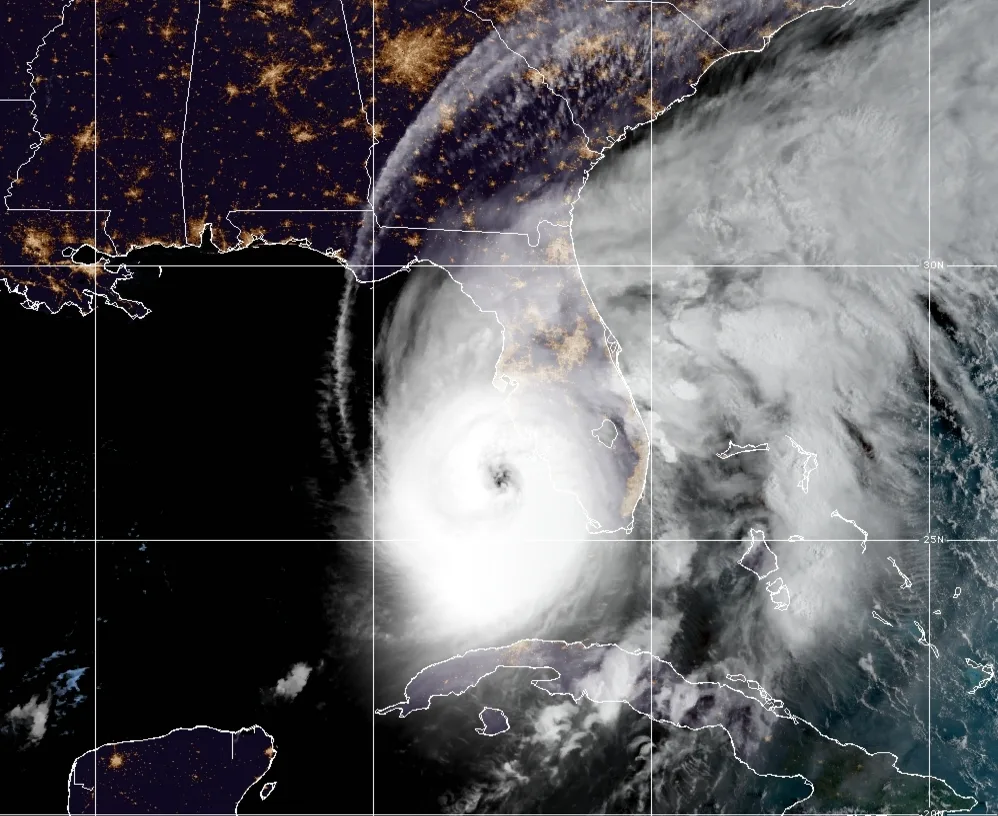For immediate Disaster Response call: (800) 775-7876

Hurricane Ian formed as a tropical disturbance near the Windward Islands on September 19. It made its way near the northern coast of South America on September 22. The next day, its wind speeds were intense enough to designate the disturbance as Tropical Depression Nine and later named Ian. It strengthened when it made landfall in western Cuba, though it slightly weakened over land. Ian’s force continued to grow as it underwent an eyewall replacement cycle and reached Category 4 hurricane status as it approached southwest Florida on September 28.
Storm Activity
Ian formed as a tropical disturbance near the Windward Islands on September 19. It made its way near the northern coast of South America on September 22. The next day, its wind speeds were intense enough to designate the disturbance as Tropical Depression Nine and later named Ian. It strengthened when it made landfall in western Cuba, though it slightly weakened over land. Ian's force continued to grow as it underwent an eyewall replacement cycle and reached Category 4 hurricane status as it approached southwest Florida on September 28.
Ian was the strongest hurricane to impact Florida since Michael in 2018. It was also the first Category 4 hurricane to devastate Southwest Florida since Charley in 2004. Ian’s fierce winds, heavy rainfall, and severe storm surges—up to 12 to 28 feet above ground level—were recorded throughout the cities along the southwestern coast, with Fort Myers feeling the brunt of the storm.
On September 29, Ian downgraded to a tropical storm as it made its way inland, crossing over the Florida peninsula and bringing torrential rainfall. The extreme rains ushered in massive flooding, producing record-breaking rainfall in some areas.
After crossing Florida, Ian restrengthened to a Category 1 hurricane on September 30 and made landfall in South Carolina that same day. It was the first landfall of a hurricane that the state had seen in almost six years, and it brought more heavy rain, high winds, and flooding along the coastline.
Ian began to weaken once over land again, becoming a post-tropical cyclone three hours after landfall. The cyclone later dissipated over southern Virginia late on October 1.
Ian’s catastrophic wake left four million Florida residents without power and 1.1 million homes and businesses without electricity in the Carolinas. Fatalities in Florida have risen to 100 as of October 5. Ian is on track to becoming Florida’s most expensive storm, with projected costs of around $47 billion.
Every insurance policy is different. You should contact your broker/agent or your insurance company to determine the amount of coverage that you have.
First, contact a water-damage restoration company, such as PuroClean, as soon as possible. Don’t wait, as water can cause mold and irremediable damage to the wood, walls, and carpet in your home. Then, contact your insurance company to start the claim process. If safe, shut off the utilities in your home to avoid further damage. Don’t enter your home if it has suffered structural damage. Don’t walk through floodwater if electricity hasn’t been turned off, and avoid contaminants.
There are many variables that determine whether a flooded home can be saved: the amount of water is one, even more important is the amount of time the water was in/around the home. Every situation is different!
Water damage can occur after natural disasters, such as thunderstorms or hurricanes that cause flooding, from pipe bursts, appliance malfunctions, roof leaks, foundation leaks, septic tank overflows, poor drainage, and more. Flash flooding, pipe bursts, and sewage backups are especially dangerous as they can produce several inches of water in less than a day.
Every insurance policy is different. You should contact your broker/agent or your insurance company to determine the amount of coverage that you have.
First, contact a water-damage restoration company, such as PuroClean, as soon as possible. Don’t wait, as water can cause mold and irremediable damage to the wood, walls, and carpet in your home. Then, contact your insurance company to start the claim process. If safe, shut off the utilities in your home to avoid further damage. Don’t enter your home if it has suffered structural damage. Don’t walk through floodwater if electricity hasn’t been turned off, and avoid contaminants.
There are many variables that determine whether a flooded home can be saved: the amount of water is one, even more important is the amount of time the water was in/around the home. Every situation is different!
Water damage can occur after natural disasters, such as thunderstorms or hurricanes that cause flooding, from pipe bursts, appliance malfunctions, roof leaks, foundation leaks, septic tank overflows, poor drainage, and more. Flash flooding, pipe bursts, and sewage backups are especially dangerous as they can produce several inches of water in less than a day.
© 2025 PuroClean. All Rights Reserved.
© 2025 PuroClean. All Rights Reserved.